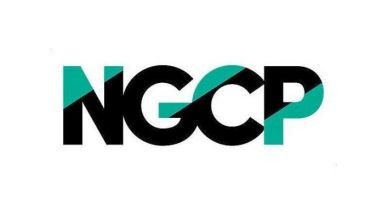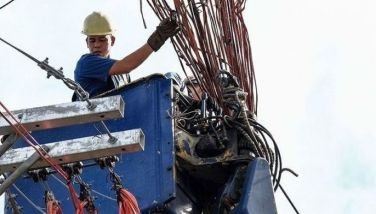New flights between Clark, Asian cities to spur tourism
October 1, 2005 | 12:00am
Clark Development Corp. expects Philippine tourism to be the biggest winner with the opening of new flights between Clark Special Economic Zone in Pampanga and various Asian cities in October.
With additional flights to Clark, the Philippines will attract more tourists from China, Taiwan, Korea, Thailand, and other East Asian and Southeast Asian countries, according to Patrick Gregorio, CDC vice-president for business development. Gregorio, only 37 year old, was formerly president of Waterfront Hotels and Casinos in Cebu.
Gregorio, the founding chairman of the highly successful private sector-led Cebu Visitors and Convention Bureau, said he expects the volume of tourist arrivals at Clark Special Economic Zone in Pampanga to double starting October, with the opening of the Diosdado Macapagal International Airport (DMIA) for flights from Hong Kong, Taiwan and Thailand.
This will translate to additional revenues of $8 million to $10 million in revenues for the airline industry every month, or close to $100 million annually, he said.
The Department of Transportation and Communication has estimated that passenger arrivals at Clark would most likely exceed 40,000 in October from an average of around 20,000 a month in the January-to-August period.
From around 37 flights each week, the DMIA is expected to accommodate up to 50 flights a week with the entry of new carriers in October. "This is expected to spur tourism in Central Luzon and attract more foreign visitors to the Subic-Clark economic growth corridor," Gregorio said.
Among the foreign airlines that have already expressed to serve the Clark route are Hong Kong Express, Thai Air Asia, Malaysia’s AirAsia and Singapore’s Tiger Airways Ltd. The last two along with Korea’s Asiana Airlines have actually started serving the Clark route early this year and eye increased flights beginning October.
Clark hosts more than 300 companies, including industry giants AOL, UPS, DHL, Rolls Royce, and Yokohama Tire.
The Arroyo administration is trying to transform the Subic-Clark economic growth corridor into the next commercial and tourism hub in Asia. In particular, industry players see Clark as Asia’s cheapest gateway, with the opening of DMIA to low-cost carriers.
"Our vision is to establish Clark as Asia’s most affordable gateway, compared to other regional centers such as Hong Kong and Singapore," Gregorio said.
Gregorio added that aside from DMIA, two other major infrastructure projects are underway to transform the Subic-Clark growth corridor into a leading logistics hub in the Asia Pacific region.
The Japan Bank for International Cooperation, the financing arm of the Japanese government providing long-term, low-interest loans to developing countries, has extended more than P25 billion in concessional loans for Subic Bay Port Development Project and the Subic-Clark-Tarlac Expressway Project.
With additional flights to Clark, the Philippines will attract more tourists from China, Taiwan, Korea, Thailand, and other East Asian and Southeast Asian countries, according to Patrick Gregorio, CDC vice-president for business development. Gregorio, only 37 year old, was formerly president of Waterfront Hotels and Casinos in Cebu.
Gregorio, the founding chairman of the highly successful private sector-led Cebu Visitors and Convention Bureau, said he expects the volume of tourist arrivals at Clark Special Economic Zone in Pampanga to double starting October, with the opening of the Diosdado Macapagal International Airport (DMIA) for flights from Hong Kong, Taiwan and Thailand.
This will translate to additional revenues of $8 million to $10 million in revenues for the airline industry every month, or close to $100 million annually, he said.
The Department of Transportation and Communication has estimated that passenger arrivals at Clark would most likely exceed 40,000 in October from an average of around 20,000 a month in the January-to-August period.
From around 37 flights each week, the DMIA is expected to accommodate up to 50 flights a week with the entry of new carriers in October. "This is expected to spur tourism in Central Luzon and attract more foreign visitors to the Subic-Clark economic growth corridor," Gregorio said.
Among the foreign airlines that have already expressed to serve the Clark route are Hong Kong Express, Thai Air Asia, Malaysia’s AirAsia and Singapore’s Tiger Airways Ltd. The last two along with Korea’s Asiana Airlines have actually started serving the Clark route early this year and eye increased flights beginning October.
Clark hosts more than 300 companies, including industry giants AOL, UPS, DHL, Rolls Royce, and Yokohama Tire.
The Arroyo administration is trying to transform the Subic-Clark economic growth corridor into the next commercial and tourism hub in Asia. In particular, industry players see Clark as Asia’s cheapest gateway, with the opening of DMIA to low-cost carriers.
"Our vision is to establish Clark as Asia’s most affordable gateway, compared to other regional centers such as Hong Kong and Singapore," Gregorio said.
Gregorio added that aside from DMIA, two other major infrastructure projects are underway to transform the Subic-Clark growth corridor into a leading logistics hub in the Asia Pacific region.
The Japan Bank for International Cooperation, the financing arm of the Japanese government providing long-term, low-interest loans to developing countries, has extended more than P25 billion in concessional loans for Subic Bay Port Development Project and the Subic-Clark-Tarlac Expressway Project.
BrandSpace Articles
<
>
- Latest
- Trending
Trending
Latest
Trending
Latest
Recommended





























